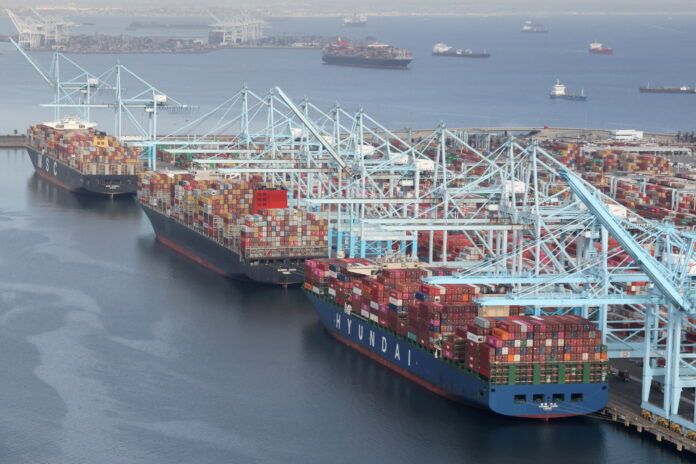WASHINGTON: The US trade deficit jumped to a record high in March amid roaring domestic demand, which is drawing in imports, and the gap could widen further as the nation’s economic activity rebounds faster than its global rivals.
Manufacturers lack the capacity to satisfy the surge in demand because of resource constraints and bottlenecks in the supply chain. Inventories are very lean. Demand is being driven by a rapidly improving public health situation and massive government aid to households and businesses to cushion the blow from the COVID-19 pandemic.
The trade deficit increased 5.6% to an all-time high of $74.4 billion in March, the Commerce Department said on Tuesday. The trade gap was in line with economists’ expectations.
Imports soared 6.3% to a historic $274.5 billion in March. Goods imports shot up 7.0% to $234.4 billion, also an all-time high. Imports of consumer goods were the highest on record, as were those for food and capital goods.
The bulk of imports in March came from China, boosting the politically-sensitive goods trade deficit with Beijing to $27.69 billion from $24.62 billion in February, reversing a tariffs-driven improvement during the Trump administration.
Imports from Mexico hit a record high in March, as did those from South Korea.
Exports accelerated in March, but continued to lag the growth in imports. Exports surged 6.6% to $200.0 billion. Exports of goods vaulted 8.9% to $142.9 billion.
They were led by industrial supplies and materials and capital and consumer goods. The pandemic remained a drag on trade services, especially travel. At $17.1 billion in March, the services surplus was the smallest since August 2012.
Robust demand is boosting manufacturing. A separate report from the Commerce Department on Tuesday showed factory orders increased 1.1% in March after falling 0.5% in February. Business spending on equipment was also stronger than initially thought.
Despite the widening of the trade deficit, the economy grew at a 6.4% annualized rate in the first quarter, the second-fastest gross domestic product growth pace since the third quarter of 2003, fuelled by pent-up domestic demand. That followed a 4.3% growth pace in the fourth quarter.
Most economists expect double-digit GDP growth this quarter, which would position the economy to achieve growth of at least 7% in 2021, which would be the fastest since 1984. The economy contracted 3.5% in 2020, its worst performance in 74 years.

























